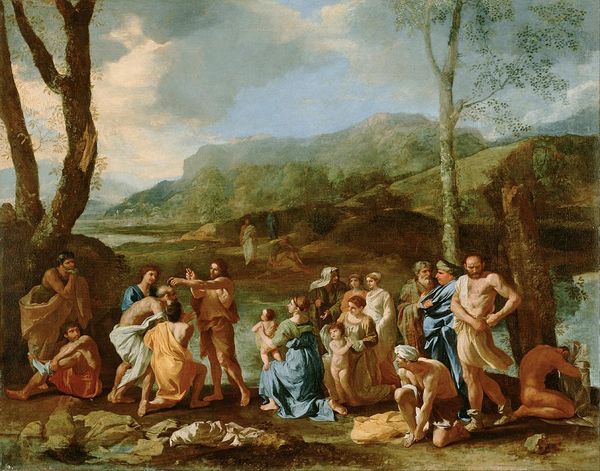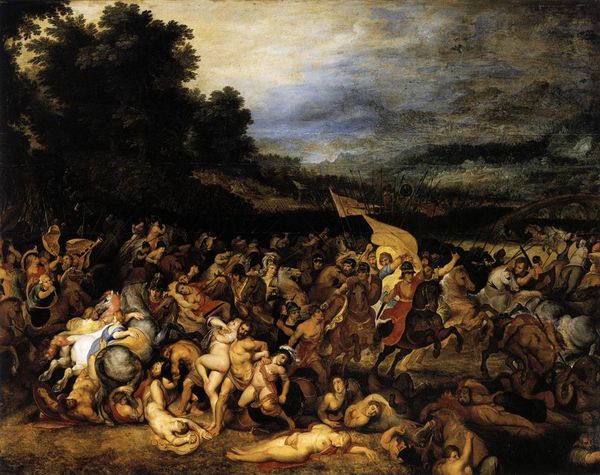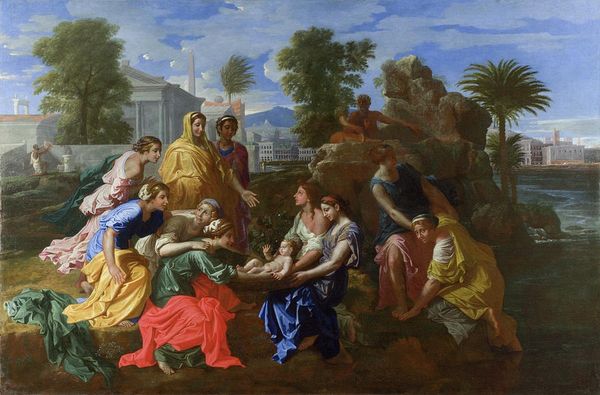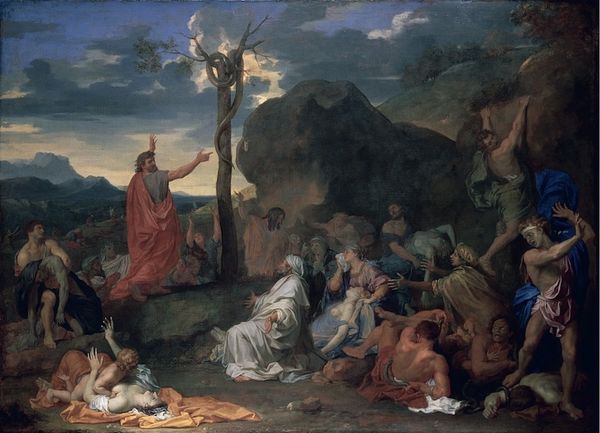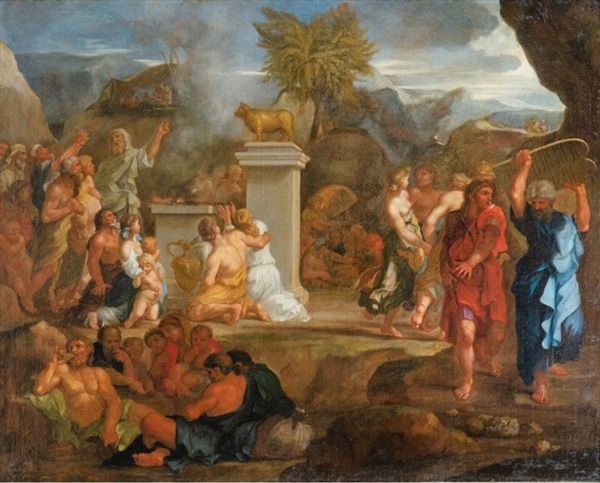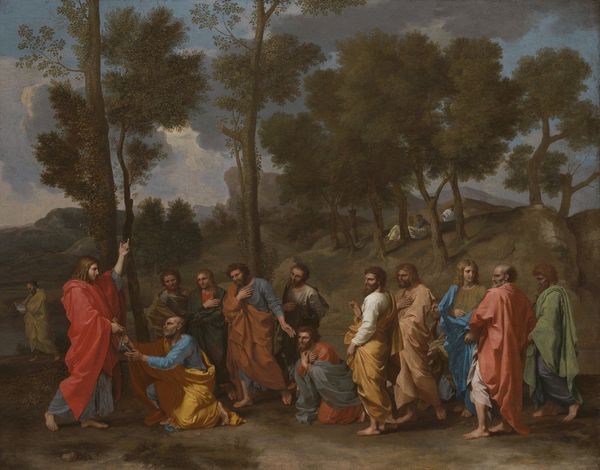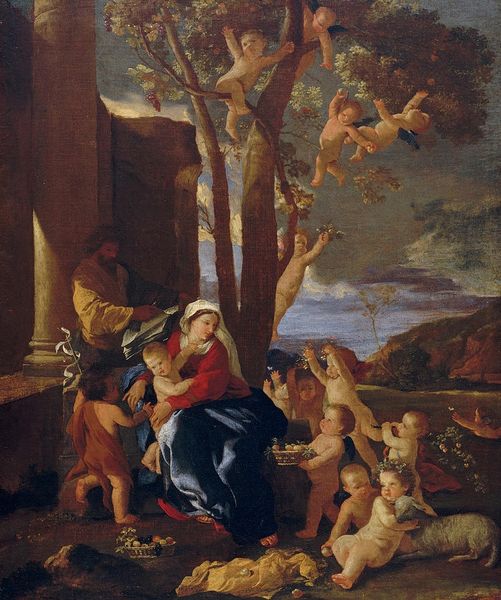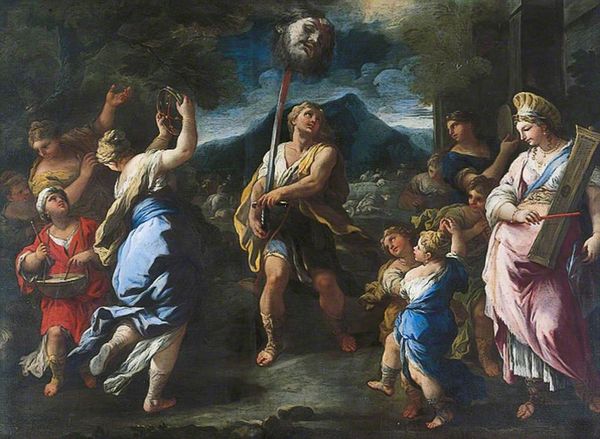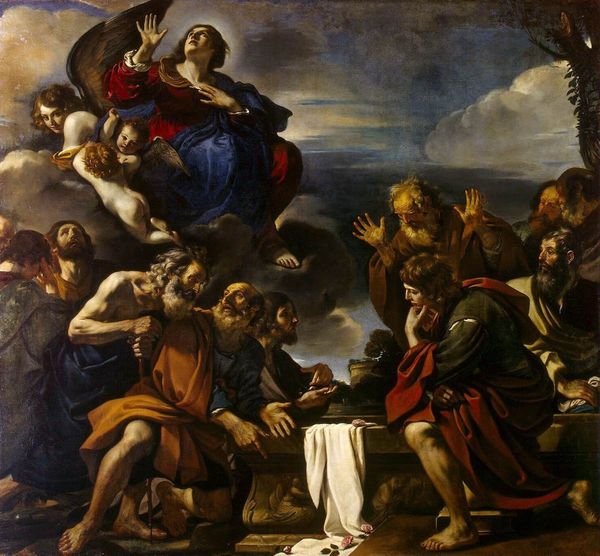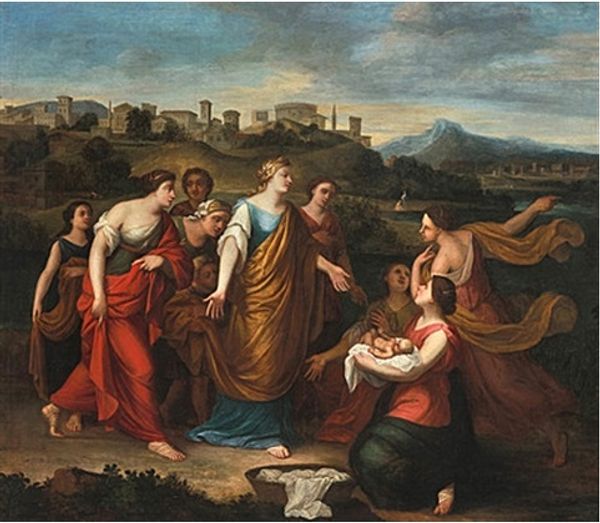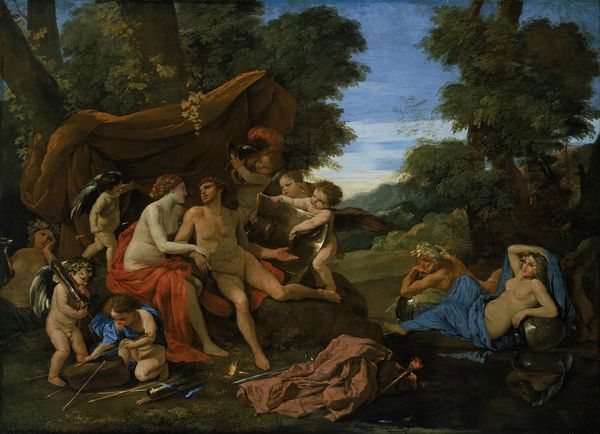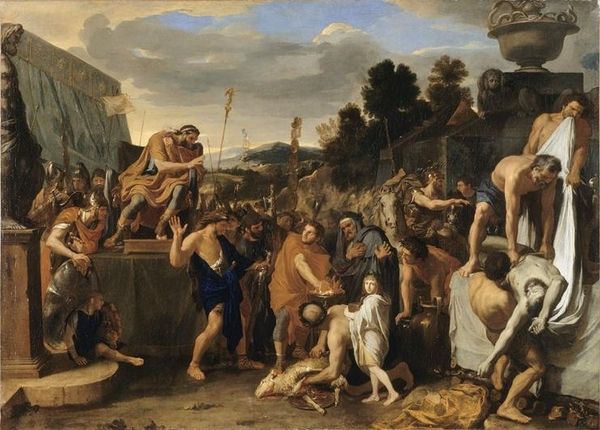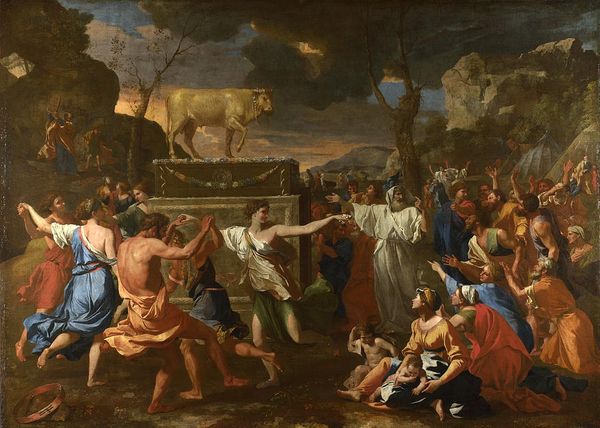
painting, oil-paint
#
allegory
#
baroque
#
painting
#
oil-paint
#
landscape
#
classical-realism
#
figuration
#
oil painting
#
mythology
#
history-painting
Copyright: Public domain
Curator: Look at the composition, wouldn’t you say that its tension lies in the spatial division between the parched foreground and the promising, albeit hazy, landscape in the distance? Editor: The painting certainly depicts a scene of desperation. It’s Charles Le Brun's "Le Frappement du Rocher," made in 1650. The parched foreground makes a point about that historical and mythological moment of water shortage and social breakdown, doesn't it? Curator: Precisely. Le Brun organizes the figures to mirror the geological strata—bodies slumped downwards mimic the rocky terrain, whilst upraised arms point to the miracle emerging from the dark, forbidding rock. Semiotically speaking, it’s the source, and thus it dictates meaning for all things around it. Editor: Right. He's drawing directly on Exodus 17:6 in the Old Testament, Moses striking the rock to provide water for the Israelites in the desert. It resonates within a framework of royal authority, echoing Louis XIV's own 'miraculous' deeds for the populace, through things like well-building campaigns and massive infrastructure projects. Curator: One cannot ignore the deliberate contrast in colour—the stark ochre and umber of the dying landscape are punctuated by flashes of vivid red and saturated blues on figures within it. That heightened contrast intensifies the painting’s dramatic effect, lending it Baroque flair and heightening the illusion. Editor: Beyond that, Le Brun stages the narrative so that viewers directly participate in interpreting that drama, much as the Israelites sought their water at that moment, from Moses' gesture—linking faith and need to water sources and their potential benefactors, the French crown. Curator: Notice too the subtle use of sfumato? Look at how the sharp foreground gradually gives way to ambiguity toward the distant mountains. Light isn’t just rendering the space but creates layers, veils of perception. It subtly emphasizes a key transition in how it all looks! Editor: Agreed. Le Brun masterfully utilizes not just visual devices, but an established, almost propagandistic understanding about leadership and society that extends to water management, particularly its dependence on those who wield control of power. Curator: "Le Frappement du Rocher” is an ambitious feat. What appeared as surface now turns out to hold meaning behind it, one only a well trained eye would see. Editor: Quite. And to appreciate “Le Frappement du Rocher” as a product that is historically situated we must look beyond visual cues, examining how and where water and power meet and converge!
Comments
No comments
Be the first to comment and join the conversation on the ultimate creative platform.

